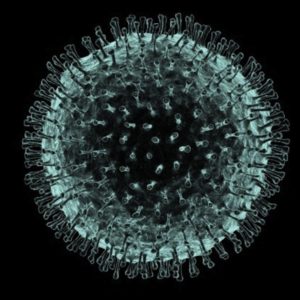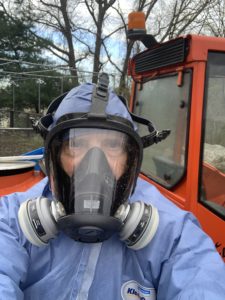I am an optimist, but there is little really encouraging to report in the field. In Massachusetts the SARS-CoV-2 virus is still very much with us. Our new state cases have settled in to several hundred a day (250 to 400 range) mostly in our larger cities and towns, i.e., those with dense housing. We are not going to zero any time soon. Compared to many other states (Florida, Texas and California) we are doing well. That is some satisfaction, but hardly reassuring.
I remain concerned about starting up schools in person, even with the elaborate plans that DPH has proposed and one of which I have reviewed as part of the Town of Lincoln Board of Health. Amazing work has gone into the preparations. The conundrum remains of high asymptomatic carriage of virus (reports of 30-40% asymptomatic, for example) and recently documented aerosol persistence of the virus, which means that infectious virus can stay airborne for potentially several hours in closed spaces that are not vigorously ventilated. How many of our schools have robust HVAC?
Also, as you all know, the overall US new infection rate (almost 50,000 daily) and death rate (around 1000 daily) is depressing by itself and vastly higher by population than any other developed country in the world. This is an epic fail that will be studied for decades to come. (By the way, we still struggle to assure adequate high-level PPE such as N95 respirators and adequate gowns for our medical practice, although we do have enough for everyone’s protection.)
We are in this for the long haul
Of course, our biotech efforts are exciting and encouraging. We are vastly more capable now than when the first SARS virus infection arose almost 20 years ago. And we have some treatment modalities for severely ill patients that have substantially reduced the death rate (including remdesivir infusions and high-dose steroids for ICU patients). But no validated outpatient treatments for the vast majority of people. By contrast, most pneumococcal pneumonias, which once were highly fatal, have been treated successfully by oral or outpatient antibiotics for several decades now.
At best, our entire biotech sector may bring us successful, validated Covid-19 vaccines early next year. But then we have to get the vaccine distributed and administered. That will be an enormous task. Last year 169 million influenza vaccine doses were distributed (CDC data). The prior year was 145 million. Actual administration was likely a bit lower.
We will need to vaccinate almost twice those influenza numbers to achieve sufficient coverage to provide the community (herd) immunity to Covid-19 that will eventually relegate the virus to an episodic minor role in illness, as opposed to dominating our lives. We have no information at all about any distribution plans for any vaccines under development. We certainly will keep everyone closely informed when we get such happy news. And of course we must all get the flu vaccine itself this fall (we will distribute in October, as described in separate post).
Repeating my self-care advice from July
What I wrote last month about risk and self care upon review remains quite accurate. You need to be vigilant, but not crazed, and seriously consider the various risks and how to mitigate them. Please review the details below. It is important.
In addition to a link, I’ll just repeat the July 4 post here:
Massachusetts is doing well with the Covid-19 infection, but we must remain vigilant if our gains and relative safety are to be maintained. If we need any external motivation, look at the explosive infections in multiple southern states in the past 10 days.
Continuing with the self-protective behaviors that we have practiced since March is critical to our success. We all know the basics and more. Here are a few quick reminders and advice, in response to many questions received.
Wear your mask
- Whenever you go out and cannot be sure of keeping social distance.
- Cloth masks or surgical masks are fine in general to protect others around you.
- The masks must cover your mouth and nose.
- Cloth and surgical masks mainly serve to protect others from possible infection from your exhalations, though they also provide meaningful protection to you in low-risk settings.
Wash your hands frequently
- Wash carefully for at least 20 seconds.
- Wash your hands whenever you open packages or bring home food.
- Use hand sanitizer when hand washing is needed and soap and water are not available.
Wash your face as well
- When you remove your face mask you must afterwards wash your hands and should also wash your face. That takes just a few additional seconds.
- The outside of the mask is presumed to be contaminated after airborne exposure. The same is true of your face.
- Also, don’t forget to wipe off your cell phones, tablets and keyboards with some frequency.
- So, wash your hands and face whenever you return from a trip to a grocery store or comparable low-risk airborne exposure.
Maintain social distance
- Six feet minimum, always with a mask if indoors and in general if outdoors as well.
- With familiarity people tend to creep closer. Pay attention.
Outdoors is almost always safe
- Thank goodness for summer. It is really hard to pass the virus in outdoor settings.
- Walking and exercising outdoors are healthy. Wear your mask if you are likely to encounter other exercisers at close distance, and otherwise just keep it handy.
- If you are entertaining a small group outdoors at home, guests should still separate by 6 ft and in general wear masks.
- But if you are entertaining outside and you want to forgo masks, we believe more distance (8-10 ft) is meaningfully safer. (We are not aware of hard data on this issue.)
Brief shopping trips are low risk, maybe outdoor restaurants
- Shopping at a supermarket with one-way aisles and spacing and masked staff has become a relatively safe activity. I observe Costco and BJ’s and others have instituted comparable safeguards. You obviously wear your mask. And wash hands and face when home.
- Outdoor restaurant dining may prove to be low-risk. With careful table spacing, this should be safe. However, we have only a few weeks’ experience with outdoor restaurants, compared with several months’ with supermarkets, so caution seems appropriate.
Yes, you can allow cleaners and plumbers into your home
- You can safely allow service-people and house cleaners into your home, providing they are practicing the same self-care procedures and that you distance yourselves while they are there.
- Service-persons should confirm that they are healthy so far as they know. They should clearly wear masks and put on disposable gloves when they arrive.
- You can occupy other space while the repairs are done. You might stay out of the room in which they worked (say the kitchen) for an hour afterward and leave the windows open to maximize air exchange.
- Household cleaners should also confirm they are apparently healthy and with no known exposures, and wear masks and gloves. You can similarly leave windows open in the house to maximize air exchange, and occupy rooms other than those they are cleaning while they are there.
- At this point, with distancing and masks and apparently uninfected service-people, you should be fine. This will help you achieve some normality in your life, not to mention the service-people’s. As well as to get that dishwasher working again.
But lingering with others indoors remains high risk
- Gathering in a living room with friends, even with normal masks, or going to an indoors restaurant, is high risk. Our only patient with new Covid-19 in the past two weeks contracted it in a restaurant in a state where indoor dining was allowed.
- Normal cloth or surgical masks do not provide you realistic protection from Covid-19 infection in those high-risk settings. Only more aggressive PPE including N95 respirator masks really reduces the risk inside.
- Consequently, it is also unlikely that indoor theater and concerts will return anytime soon.
This is our new normal
- Covid-19 is not going away in 2020. We have all adapted reasonably well. These safety procedures (hygiene, masks, distancing) work to keep us safe, with which many normal activities are low-risk. We can still socialize within these constraints.
- Please stay vigilant. It is for your protection and our protection together.




Are plastic face shields adequate for ordinary daily activities? They claim to cover eyes, nose and mouth. But I notice that they don’t cup your chin. If yes, any brand that you’d recommend?
Chin coverage not needed. Washing takes care of that. It is the additional coverage for eyes that matters. I have no special brand preference. Too many on market to comment on in an organized fashion.